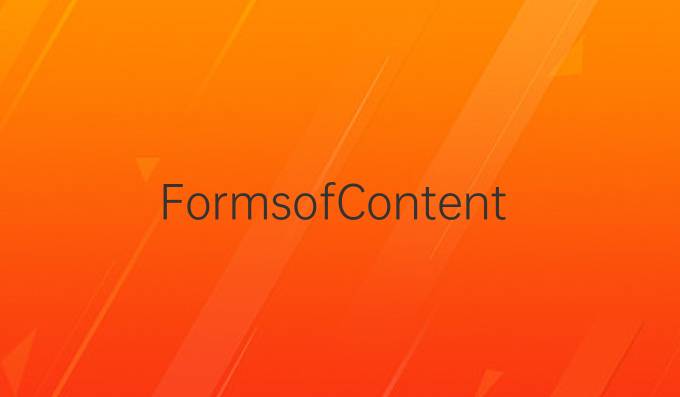
4007-702-802
Follow us on:



The source of the article:ManLang Publishing date:2024-07-20 Shared by:

Abstra: Content marketing has become a cornerstone of modern digital strategies, aimed at engaging audiences through valuable and relevant content. This article explores various forms of content marketing strategies, focusing on their effeiveness in driving engagement. The discussion encompasses four key aspes: defining content marketing and its purpose, exploring different types of content formats utilized, analyzing distribution channels for optimal reach, and discussing measurement metrics for assessing campaign success. By delving into these aspes, this article aims to provide a comprehensive overview of content marketing strategies, offering insights into how businesses can effeively utilize content to engage their target audiences.
Content marketing is a strategic marketing approach focused on creating and distributing valuable, relevant, and consistent content to attra and retain a clearly defined audience — and, ultimately, to drive profitable customer aion. It involves the creation and sharing of online material (such as videos, blogs, and social media posts) that does not explicitly promote a brand but is intended to stimulate interest in its produs or services.

Effeive content marketing serves multiple purposes within a broader marketing strategy. Firstly, it aims to build brand awareness by establishing a brand's presence and authority within its industry. Secondly, it seeks to nurture leads by providing valuable information that educates potential customers and helps them make informed decisions. Finally, content marketing aims to foster customer loyalty and advocacy by consistently delivering value even after a purchase.
Moreover, content marketing differs from traditional advertising in its approach. Rather than overtly promoting produs or services, it focuses on providing valuable content that aligns with the interests and needs of the target audience. This approach not only enhances brand credibility but also encourages ongoing engagement and interaion.
Content marketing employs various formats to deliver messages effeively across different platforms and channels. One of the most common formats is written content, such as blogs, articles, and whitepapers. Written content allows businesses to demonstrate expertise, share insights, and provide indepth information that educates and engages the audience.
Another prominent format is visual content, including images, infographics, and videos. Visual content is highly effeive in capturing attention, conveying complex information quickly, and evoking emotional responses from viewers. Platforms like YouTube, Instagram, and Pinterest have become popular for sharing visual content due to their visualcentric nature and large user bases.
Furthermore, interaive content formats, such as quizzes, polls, and calculators, encourage audience participation and provide personalized experiences. These formats not only entertain but also educate and colle valuable data about audience preferences and behaviors.
The effeiveness of content marketing heavily relies on the distribution channels used to reach and engage target audiences. Social media platforms like Facebook, Twitter, LinkedIn, and TikTok offer vast opportunities for distributing content to diverse audiences based on demographic, psychographic, and behavioral faors.
Additionally, email marketing remains a powerful distribution channel for nurturing leads and maintaining relationships with existing customers. Personalized email campaigns that deliver relevant content based on subscriber preferences can significantly increase engagement and conversion rates.
Moreover, search engine optimization (SEO) plays a crucial role in content distribution by ensuring that content is discoverable through organic search. Optimizing content with relevant keywords, meta descriptions, and backlinks enhances its visibility and attras organic traffic from search engine results pages (SERPs).
Measuring the success of content marketing campaigns involves tracking various key performance indicators (KPIs) that indicate the effeiveness of content in achieving business goals. Engagement metrics, such as likes, shares, comments, and clickthrough rates (R), provide insights into audience interaion and content resonance.
Conversion metrics, including lead generation, email signups, and sales attributed to content, measure the dire impa of content marketing efforts on driving desired aions. Analyzing these metrics helps marketers understand which types of content resonate most with their audience and optimize future content strategies accordingly.
Furthermore, qualitative metrics such as brand sentiment, customer feedback, and audience surveys offer deeper insights into audience perceptions and preferences, guiding ongoing content development and refinement.
Summary: In conclusion, effeive content marketing hinges on understanding and implementing strategies that resonate with target audiences across various platforms and channels. By defining clear objeives, utilizing diverse content formats, leveraging optimal distribution channels, and measuring relevant metrics, businesses can create compelling content that engages audiences, builds brand loyalty, and drives profitable customer aions.
What you might be interested in
Unlocking the Benefits of SEM托管: A Comprehensive Guide to Maximizing Your Online Advertising Success
2025-04-16Mastering WeChat Content Marketing: Proven Strategies and Techniques for Engaging Your Audience
2025-04-16Unlocking SEO Resources: Essential Tools and Strategies for Dominating Search Engine Rankings
2025-04-16Mastering Content Marketing Strategies: Unlocking Your Brands Potential Through Effeive Engagement
2025-04-16Strategic Innovations in Marketing Promotion: Unlocking New Avenues for Brand Growth and Engagement
2025-04-16Maximize Your Online Presence: Unlock Success with Our Expert SEO推广公司 Services
2025-04-16Comprehensive Solutions for Business Website Development: Elevate Your Online Presence with Expert D
2025-04-16Maximizing Business Reach: The Ultimate Guide to 网络营销外包 for Strategic Growth and Success
2025-04-16What you might also be interested in
Understanding the Essence of Content Marketing: A Comprehensive Guide to Effeive Strategies and Tech
2024-10-20Unlocking the Power of WeChat Content Marketing: Strategies for Engaging Your Audience and Driving G
2024-10-24Unlocking Full Potential: A Comprehensive Guide to SEO Website WholeSite Optimization
2025-01-13